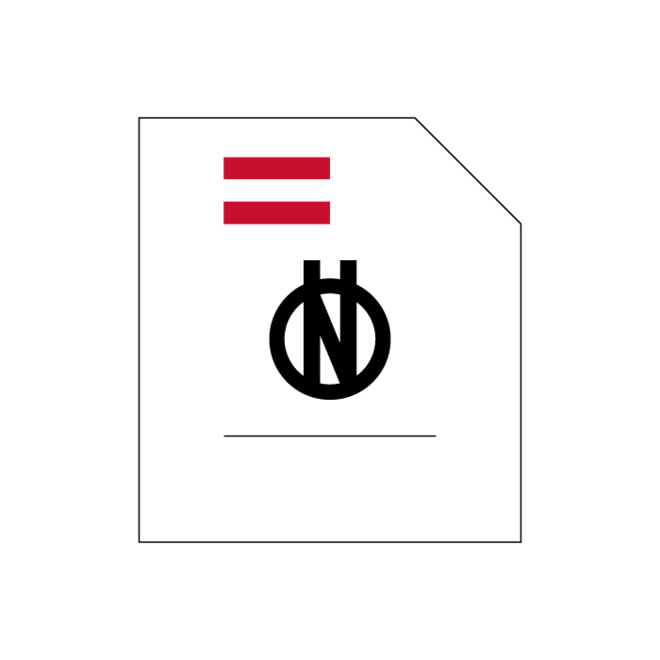Jetzt anpassen und kaufen
65,70 €
exkl. USt.
Konfigurieren


Norm
ÖNORM EN 302217-2-1 V 1.1.3
Ausgabedatum: 2005 03 01
Fixed Radio Systems - Characteristics and requirements for point-to-point equipment and antennas - Part 2-1: System-dependent requirements for digital systems operating in frequency bands where frequency co-ordination is applied
The present document summarizes all system-dependent requirements for Point-to-Point (P-P) equipment in
applications deployed in bands where frequency co-ordination is g...
Weiterlesen
ZURÜCKGEZOGEN
: 2007 08 02
Herausgeber:
Austrian Standards International
Format:
Digital | 56 Seiten
Sprache:
Englisch
Aktuell Gültig:
Standards mitgestalten:
Fachgebiete
IT, communication & electronic, Components and accessories for telecommunications equipment, Aerials
IT, communication & electronic, Radiocommunications, Radio relay and fixed satellite communications systems
Electric & lighting engineering, Radiocommunications, Radio relay and fixed satellite communications systems
The present document summarizes all system-dependent requirements for Point-to-Point (P-P) equipment in
applications deployed in bands where frequency co-ordination is generally applied. These requirements are introduced
in two different clauses sub-sets:
Main requirements are requirements that are also related to the "essential requirements" under article 3.2 of
the R&TTE Directive [1] and further detailed in EN 302 217-2-2 [16].
Complementary requirements are requirements that are not related to essential requirements under
article 3.2 of the R&TTE Directive [1]. Nevertheless they are considered having been commonly agreed for
proper system operation and deployment when specific deployment conditions or compatibility requirements
are present. Compliance to all or some of these requirements is made on a voluntary basis.
Description and limits for parameters relevant to essential requirements under article 3.2 of R&TTE Directive [1] are
given in EN 302 217-2-2 [16].
For other system-dependent parameters where standardization is required but that do not affect the R&TTE Directive
"essential requirements" mentioned above, description and limits are detailed in the present document in the annexes A
to G, subdivided by frequency band or specific applications.
The present document deals with Radio Frequency (RF) and base-band equipment characteristics; antenna system
requirements are covered in EN 302 217-4-1 (see bibliography) and EN 302 217-4-2 (see bibliography).
The present document does not cover test procedures and test conditions which are set out in EN 301 126-1 [14].
As the maximum transmission rate in a given bandwidth depends on system spectral efficiency, different equipment
classes are defined:
Class 1: equipment spectral efficiency based on typical 2-states modulation scheme
(e.g. 2-FSK, 2-PSK or equivalent);
Class 2: equipment spectral efficiency based on typical 4-states modula (. (...abbreviated)
ÖVE/ÖNORM EN 302217-2-1 V2.1.1
2015 03 01
Fixed Radio Systems - Characteristics and requirements for point-to-point equipment and antennas - P...
Norm
ÖVE/ÖNORM EN 302217-2-1 V1.3.1
2010 04 01
Fixed Radio Systems - Characteristics and requirements for point-to-point equipment and antennas - P...
Norm
ÖNORM EN 302217-2-1 V 1.2.1
2007 08 01
Fixed Radio Systems - Characteristics and requirements for point-to-point equipment and antennas - P...
Norm
ÖNORM EN 302217-2-1 V 1.1.3
2005 03 01
Fixed Radio Systems - Characteristics and requirements for point-to-point equipment and antennas - P...
Norm
↖
Norm
IEEE 802.3-2002
Ausgabedatum :
2002 01 01
IEEE Standard for IT - Telecommunications and Information Exchange Between Systems - LAN/MAN - Specific Requirements - Part 3: CSMA/CD Access Method and Physical Layer Specifications - Maintenance Revision #6
Norm
IEEE 1802.3-2001
Ausgabedatum :
2001 10 19
IEEE Conformance Test Methodology for IEEE Standards for Local and Metropolitan Area Networks - Specific Requirements - Part 3: Carrier Sense Multiple Access With Collision Detection (CSMA/CD) Access Method and Physical Layer Specifications
Norm
ÖNORM EN 302217-2-1 V 1.2.1
Ausgabedatum :
2007 08 01
Fixed Radio Systems - Characteristics and requirements for point-to-point equipment and antennas - Part 2-1: System-dependent requirements for digital systems operating in frequency bands where frequency co-ordination is applied
